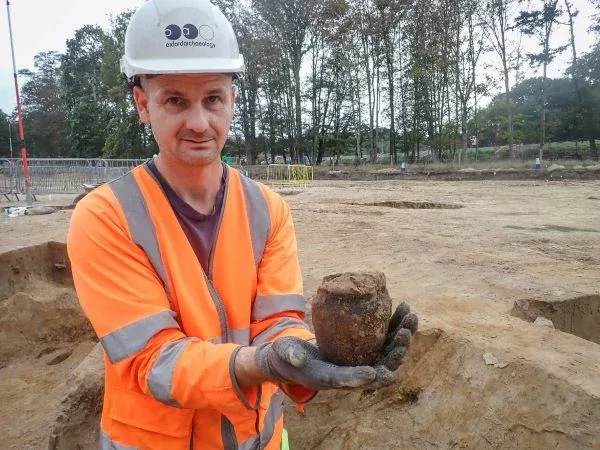Historical artefacts dating back thousands of years have been unearthed by archaeologists working on the National Highways M25 Jct 10/A3 improvement scheme near Wisley in Surrey.
Since Summer 2022, Balfour Beatty, working on behalf of National Highways, have been working with Oxford Archaeology to undertake a number of archaeological investigations as part of the scheme. Remains discovered include a late Bronze Age / early Iron Age settlement around 1,000 to 500 BC and evidence of post-medieval agricultural practices.
The settlement was discovered just south of the A3, towards the eastern scheme limit and comprises the remains of at least five roundhouses, the largest of which has a diameter of about 10m. They are defined by ring ditches which were found to overlap each other, exposing the longevity of the settlement. The team also found re-cuts within a pair of parallel ditches that enclose the site, showing that the settlement was maintained over a prolong period of time.
Jonathan Wade, project lead for the M25 Jct 10/A3 improvement scheme, said: “The farmstead and artefacts we have unearthed near Painshill are hugely exciting and significant finds as it helps to further shape our understanding of what life in the region was like over this period in history, and we can see how the site developed through different periods of time.”
John Boothroyd, Oxford Archaeology, added: “It’s great to find such an interesting site and a reminder that through modern progress we can gain fascinating insights into our past.”
Junction 10 on the M25 is one of the busiest in the region with over 300,000 vehicles passing through every day. Road users regularly experience large queues and heavy congestion. National Highways’ £317m upgrade will reduce congestion, create a smoother flow of traffic and provide safer journeys for thousands every day.
As a part of the scheme, National Highways will restore an area the size of 47 full-sized football pitches of heathland at Wisley and Ockham commons in Surrey. The scheme which will help bring the area back to life will have many long-term benefits to rare and unusual wildlife.
(Picture, An Iron Age vessel recovered from settlement site – National Highways)






















